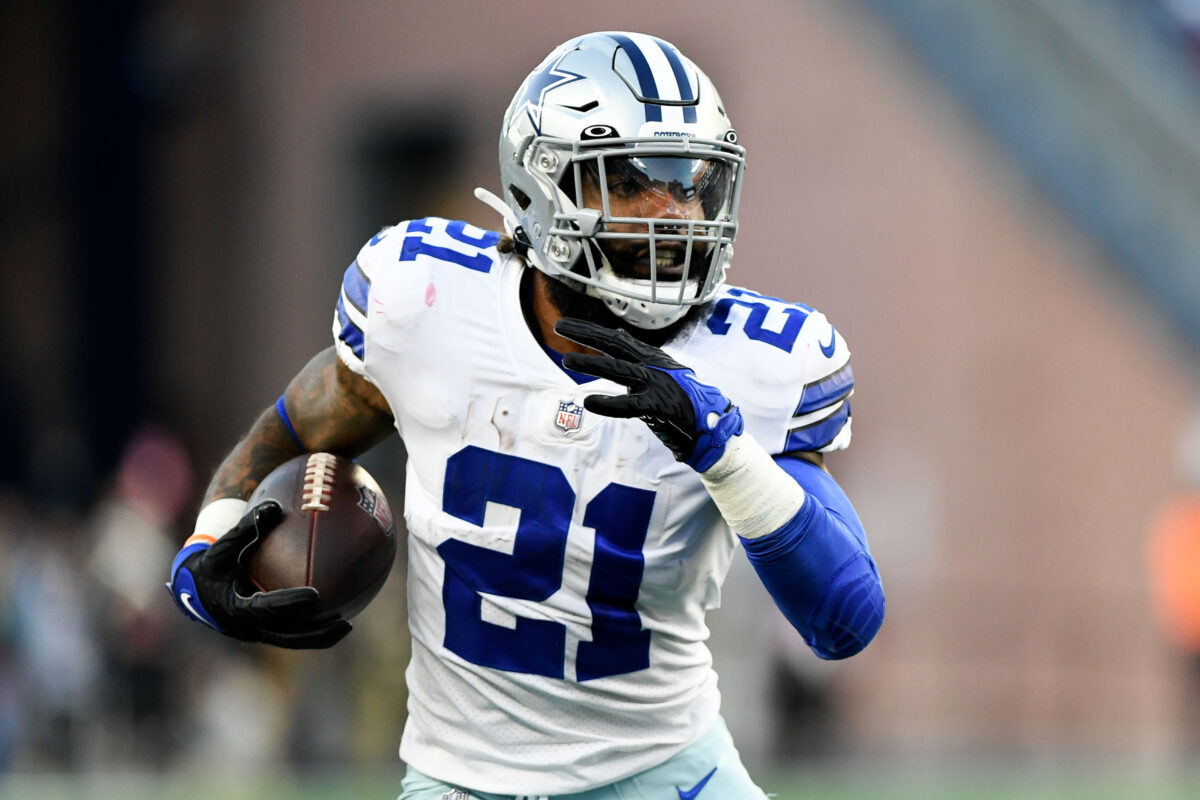Ezekiel Elliott has been incredibly durable during his NFL career. Besides missing six games in 2017 due to a suspension, Elliott has only missed the season finale for the Dallas Cowboys in 2016 and 2018, both as pre-playoff rests, and one game with a calf strain in 2020.
The 2021 season was the fourth 1,000-yard campaign for Elliott in six seasons. However, after two 100-yard performances and averaging 90.4 yards per game with five rushing touchdowns in the first five weeks, Elliott registered just 45.8 yards a contest in the last 12 games, and the reason why was because he played with a partially torn PCL for most of the season which was revealed after the Cowboys playoff loss to the San Francisco 49ers in the wild-card round.
Elliott’s dedication and commitment to his teammates are admirable and he should be respected for it. Also, it’s understandable why he would want to remain on the field and protect his spot on the depth chart with a guy like Tony Pollard behind him who showed his worth by gaining 719 yards on 5.5 yards per carry in 2021.
In this case, though, the Cowboys dropped the ball, failing to protect the player from himself.
A partially torn PCL is considered a Grade 2 sprain, treated without operation as long as there is no other damage to the surrounding ligaments or tendons in the knee. A Grade 3 requires arthroscopic surgery and since Elliott announced he would not be going under the knife, it’s a fair assumption he has a Grade 2.
Grade 2 sprains are normally treated with a knee brace (which Elliott started wearing midway through the injury), physical therapy and anti-inflammatories.
Another important factor in recovery? The RICE Method: Rest, Ice, Compression and Elevation. Almost every orthopedic website discussing partial PCL tears identifies a recovery period ranging from several weeks to several months.
If the Cowboys would have gone the route of sitting Elliott for a few games they may have gotten a more productive and certainly a more well-rested version of him to close out the season and even into the playoffs. Perhaps the Cowboys doctors could not guarantee that a few weeks of rest would not have significantly aided Elliott’s return to form, that his situation was one that would require the far end of the spectrum, but it’s certainly noteworthy that a few weeks off wasn’t even attempted.
During the last 12 games, not only did Elliott’s production go down but it was noticeable he was playing hurt. Although Pollard hasn’t shown capable of carrying the load Elliott can for a full season, he was more than capable of holding down the fort for a few weeks while Elliott got to rest.
This potential mishandling of Elliott’s injury falls squarely on the Cowboys as an organization. Yes, winning games is what any team’s main objective is but it should never come before the health and well-being of a player. Most injuries a player attempts to play through run the risk of related injury to that part of the body, or another through compensation.
It should be noted Elliott avoided further injury here, and that’s part of the delicate balance of being a professional player and the ridiculous gamut they put their bodies through to be among the best at their trade.
The days of Elliott leading the league in rushing may be behind him but he proved during the early part of this season he’s still capable of being a very productive runner. That’s what makes the Cowboys’ decision to keep putting him on the field egregious, in my estimation. The risk, although it worked, could have been disastrous not just for this season but for the rest of Elliott’s career.
Regardless of the reason why the Cowboys didn’t decide to sit Elliott for a while this situation is a bad look for them and paints the picture that they are willing to risk a player’s long-term health just to win games. It’s highly doubtful that’s the case, but the optics are not good.
